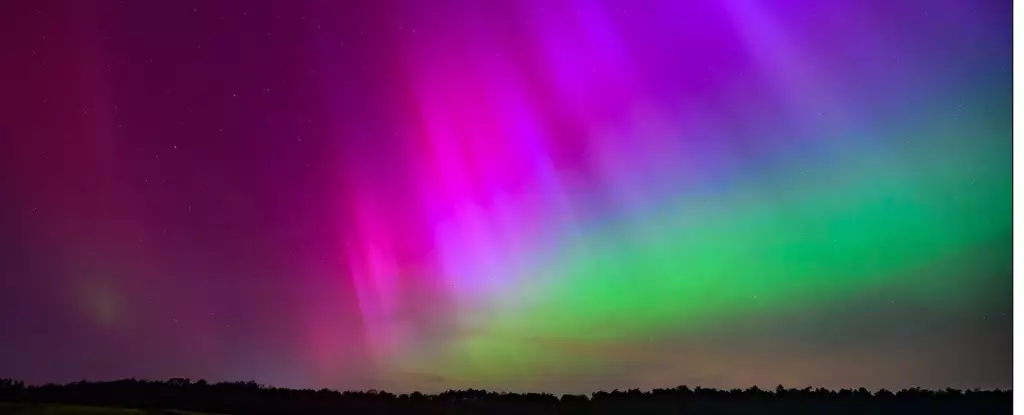The recent surge in auroral activity that dazzled skywatchers around the world was a result of a massive solar flare sending energetic particles hurtling towards Earth. This phenomenon, known as the aurora borealis or aurora australis, is caused by charged particles from the Sun colliding with Earth’s atmosphere. While these charged particles are typically blocked by Earth’s magnetic field, they can penetrate the atmosphere near the poles, creating a stunning light display.
To understand how the aurora produces its captivating colors, it is essential to delve into the world of atoms and their behavior when excited. When high-speed electrons collide with oxygen molecules in the upper atmosphere, they break the molecules apart, resulting in individual oxygen atoms. These atoms, in an excited state, emit light as a way to release energy and return to a stable state. Different elements produce varying colors of light when energized, with copper giving off blue light, barium producing green light, and sodium emitting yellow-orange hues.
The predominant green light seen in the aurora is a result of oxygen atoms transitioning from one state to another, a process that occurs relatively slowly compared to other light emissions. This green glow, arising from a so-called “forbidden” transition in oxygen atoms, was a mystery to scientists for years until its source was pinpointed in the 1920s. Furthermore, the red light observed in intense auroras comes from another forbidden transition in oxygen atoms, occurring at higher altitudes due to reduced collisions with other molecules. Additionally, ionized nitrogen molecules can contribute to the color display, adding blue and red hues to the mix.
While the aurora’s vibrant colors are visible to the naked eye during bright displays, cameras can capture the nuances of the light show more effectively. Cameras benefit from longer exposure times, allowing them to capture more light and produce vivid images even in dim conditions. Moreover, the color sensors in our eyes are less efficient in low-light settings, leading to a potentially subdued perception of the aurora’s colors. However, when the aurora reaches its peak intensity, the full spectrum of hues becomes apparent to observers.
The aurora phenomenon is a breathtaking display of nature’s beauty and the intricate interactions between the Sun, Earth’s atmosphere, and atomic particles. Understanding the science behind the aurora not only enhances our appreciation of this celestial spectacle but also sheds light on the essential role of atoms in creating the dazzling colors that illuminate the night sky. As we await the next peak in solar activity, anticipation builds for another opportunity to witness the mesmerizing aurora in all its glory.


Leave a Reply